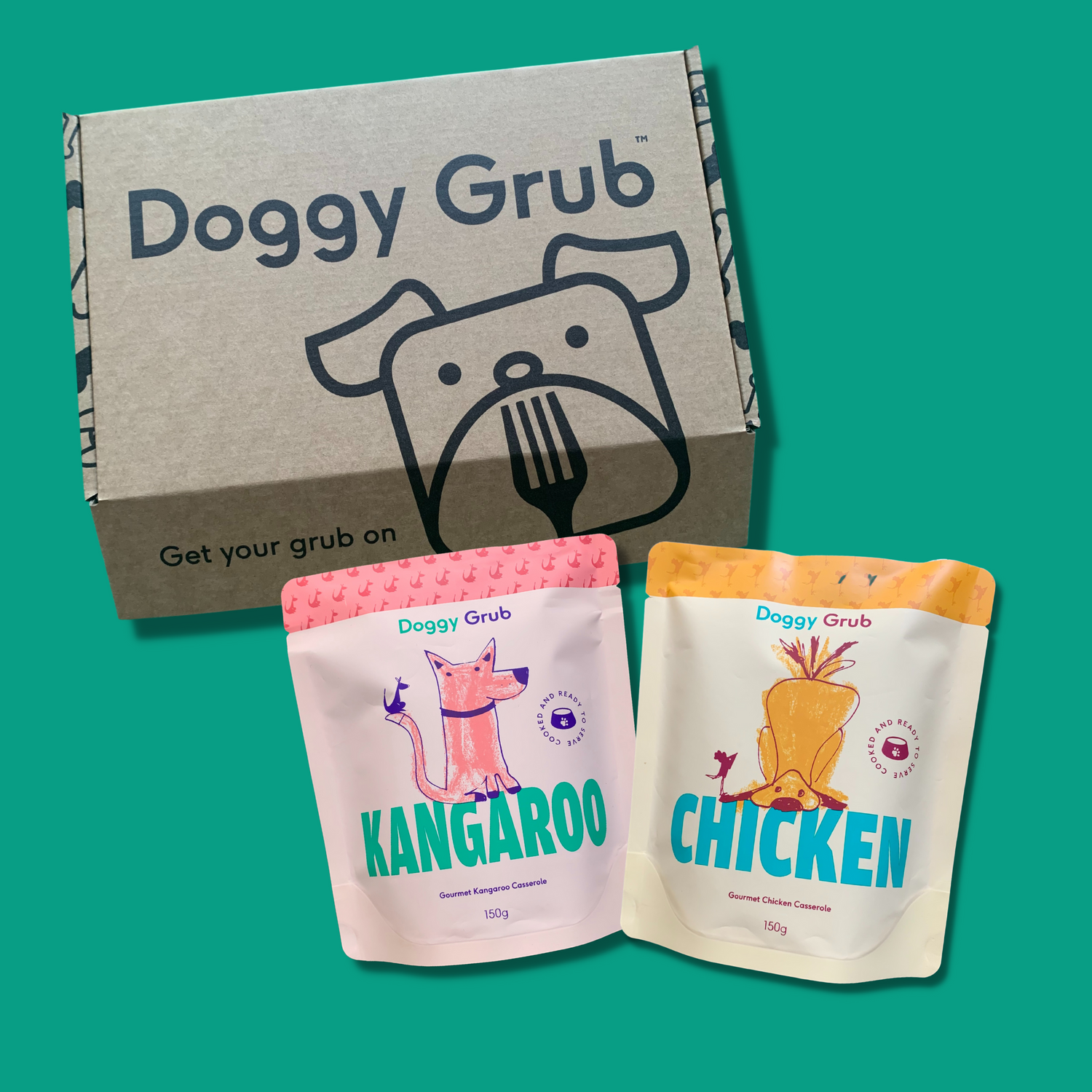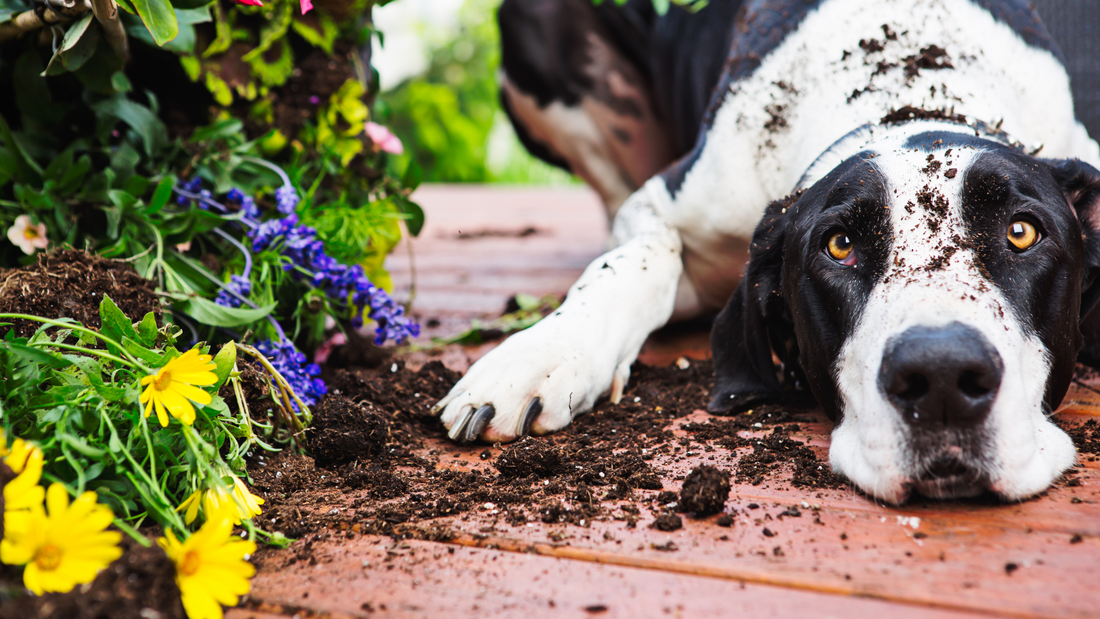Who doesn't love a beautiful garden, especially when you have a dog at home?
Whether it’s flower beds, borders, bulbs, or bushes, here’s a guide on what to plant to keep your garden safe and enjoyable for your pup.
Dangerous and Toxic Plants for Dogs: What to Watch Out For
Can you turn your back for just a second without your dog gobbling up something they shouldn’t? Many dog owners know this scenario all too well, especially when it comes to plants. Some common garden and house plants can be harmful, even toxic, to our furry friends.
While most harmful plants have a bitter taste that deters dogs, some pups, especially curious puppies, can’t resist munching on them.
To let your dog roam freely without worry, it’s essential to know which plants are safe and which are harmful to dogs.
Here’s a handy list of dangerous plants and tips on what to do if your dog ingests something they shouldn’t.
Common Indoor Plants Harmful to Dogs
Some common houseplants can be mildly irritating or even toxic to dogs if eaten in large quantities. Others pose less risk if placed safely out of reach. We’ve categorized them by risk level:
Zero-Risk, Hardy Plants:
- Ferns (except Asparagus Plumosus, which is toxic)
- Mother-in-law's Tongue/Snake Plant (Sansevieria)
- Palms (Kentia Palm is best; avoid Sago Palm, which is toxic)
- Spider Plants
Medium-Risk Large Indoor Plants and Trees:
- Ficus benjamina (Weeping Fig) and Ficus elastica (Rubber Plant) (mild irritants if ingested)
- Pothos (Scindapsus) (can cause vomiting if ingested; safer if placed out of reach)
High-Risk Indoor Plants to Avoid:
- Dieffenbachia
- Jade Plant (Crassula family)
- Common Ivy (Hedera)
- Dragon Tree (Dracaena)
- Aloe Vera
- Elephant Ear (Caladium)
- Philodendrons
- Any prickly cacti
Common Garden Plants Toxic to Dogs
The following garden plants are poisonous to dogs and should be avoided:
- Aconite
- Azaleas
- Bleeding Heart (Dicentra spectabilis)
- Crocus
- Autumn Crocus
- Cyclamen
- Laburnum
- Delphinium
- Foxglove
- Wisteria
- Mistletoe
- Hellebores
- Daylilies
- Hydrangeas
- Holly
- Yew
- Bluebell/Wild Hyacinth
- Hyacinths
- Daffodils
- Oleander
- Ivy
- Lilies
- Calla Lilies
- Lupins
- Lily of the Valley
- Elephant Ears
- Sweet Peas
- Rhododendrons
- Rhubarb (leaves)
- Tulips
What to Do If Your Dog Eats a Toxic Plant
Symptoms vary depending on the plant and the amount consumed. In some cases, eating part of a harmful plant may cause stomach issues, vomiting, diarrhea, or skin irritation. Ingesting a toxic plant like Foxglove can be more serious and requires an emergency vet visit.
Note that some plants are more toxic than others. For example, while daffodil and crocus flowers can be harmful, their bulbs are especially dangerous as they contain higher concentrations of toxins and are more tempting to dogs. Other bulbs, like onions and garlic, are also toxic. Take your dog to the vet if you suspect they’ve eaten any of these plants.
Signs Your Dog Ate a Toxic Plant:
- Lethargy
- Shivering or tremors
- Vomiting
- Diarrhea
- Skin irritation or itching
- Loss of appetite
Steps to Take if Your Dog Eats a Toxic Plant:
It depends on what your dog ate. If it’s just a few leaves causing mild vomiting, some rest and cuddles may be all they need. However, you might not always know which plants or how much they’ve eaten, so when in doubt, head to the vet immediately.
Bringing the plant (if you know which one) to the vet can help them better understand what your dog ingested, especially if you don’t know the plant species. Common names for plants can vary, so having the actual plant can be very helpful. Treatments might range from inducing vomiting to more serious interventions like managing poisoning or even surgical treatment.
Preventing Your Dog from Eating Harmful Plants
Thankfully, most harmful plants have an awful taste that deters most dogs. Prevention is key at home: avoid having toxic houseplants or place them well out of reach.
Outside, keep an eye on your dog and be ready to intervene if they seem too interested in something they shouldn’t eat. Whether in the garden or on a walk, a firm "no" should suffice if your dog sniffs a harmful plant. Sometimes, you might need to physically remove them or even pull a plant piece out of their mouth.
Gardening Tips for Dog Owners
- Elevated Beds and Planters: Worried about a curious nose digging up your plants (and making a mess)? Raised beds can help protect your garden from small dogs.
- Avoid Chemicals: Many gardening products like slug repellents, fertilizers, and weed killers can be harmful to dogs. Opt for natural, dog-friendly alternatives whenever possible.
- Secure Your Garden: Regularly check fences and walls for gaps or damage. To let your dog play without constant supervision, make sure they can’t dig under, jump over, or get injured by your garden’s boundaries.
- Provide Shelter and Shade: Dogs love sunbathing but can easily overheat. Ensure there are shaded spots and shelters for sudden rain. An awning, a shed, or even a dense tree can offer protection. If your dog spends a lot of time outside, consider setting up or building a doghouse.
Idea: A Sensory Garden
Gardens can be incredibly stimulating for dogs. If you have enough space, create pathways and areas with different textures and scents. Plants like rosemary and lavender are great for their rich aromas. Consider adding a dedicated digging spot with soil or sand to keep those curious paws busy!
Want to be the first to get your paws onto the hottest topics? Subscribe to our newsletter!
-------------------------------------------------------------------
The Doggy Grub blog is dedicated to helping dogs and their owners achieve happier, healthier lives, changing the way we feed our dogs one bowl at a time! If you would like to know more about our fresh food head to Doggy Grub










